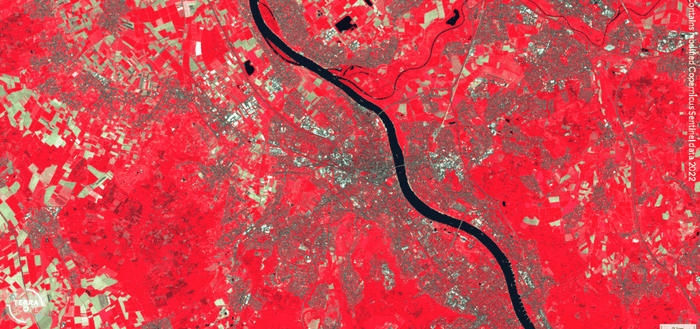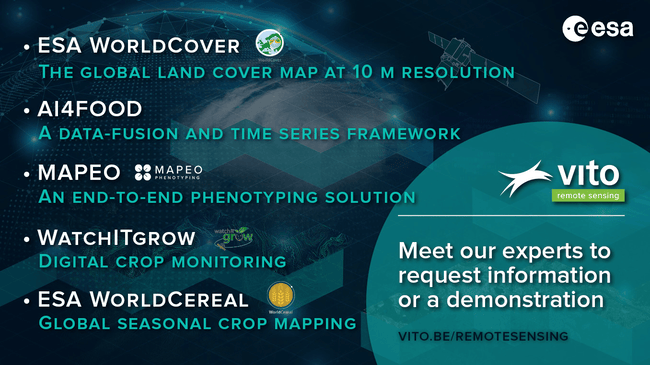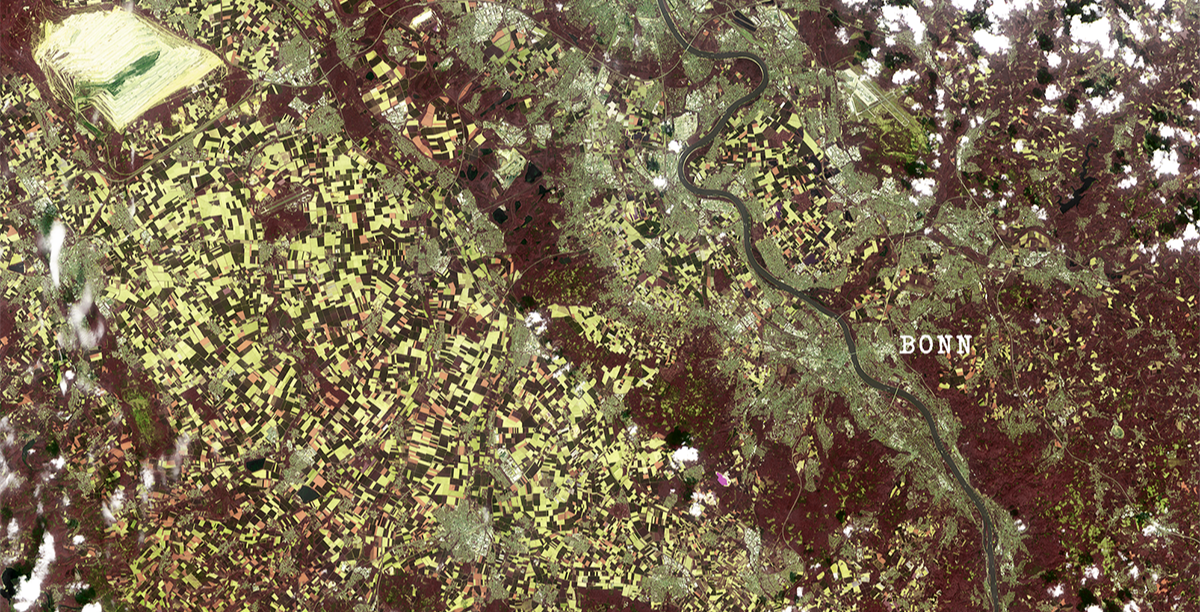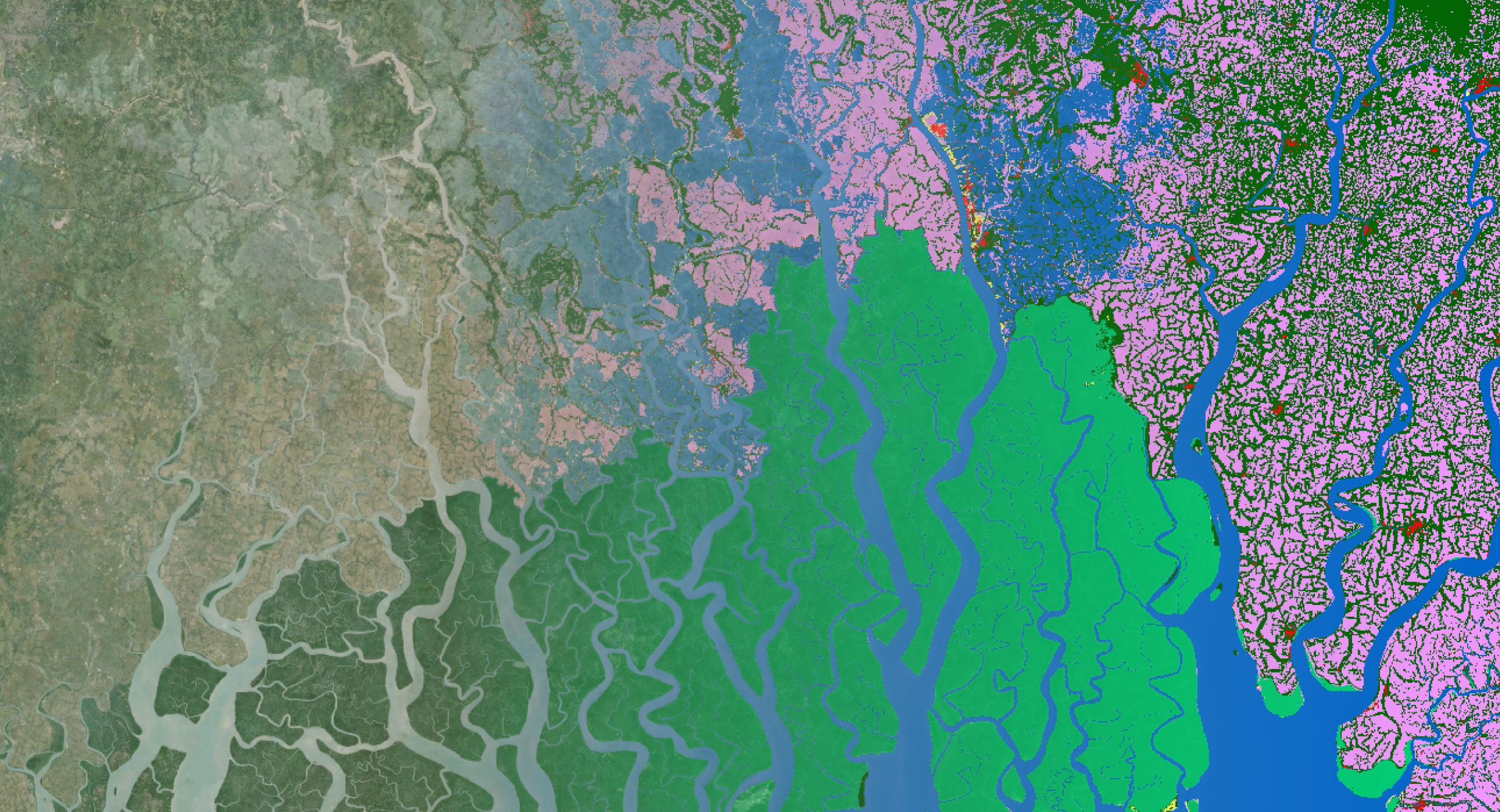Earth Observation in a changing world
While we are preparing our participation in ESA’s Living Planet Symposium (LPS) 2022, my first thought does go to the last edition of LPS which was held Milan, in person, with over 3000 participants, together in one big venue. Sounds a little strange after two years of COVID-19 doesn’t it? COVID-19 forced us to find our way into virtual event and webinars. Although they also come with big advantages, we couldn’t be more thrilled that the largest Earth Observation conference in Europe can take place in person. For us it is the ideal ‘playground’ to present our EO expertise, demonstrate a series of EO-based services and network with sector colleagues in person in the ‘post-covid’ era.
Fast-forwarding to today, we can say that the sector grew and matured well, organizing the same huge event without any restrictions, almost like nothing has happened in between. But the world has changed and is still changing. All the more reason to stress the importance and benefits of using Earth Observation to reach a sustainable balance on our planet.

Sentinel-1, Sentinel-2 color and color infrared and WorldCover images of the Rhine river and the city of Bonn
© Sentinel images: contains modified Copernicus Sentinel data, processed by VITO Remote Sensing - © ESA WorldCover project 2020 / Contains modified Copernicus Sentinel data (2020) processed by ESA WorldCover consortium
Destination Bonn
Throughout the Living Planet Symposium our remote sensing experts will present several flagship projects including ESA’s World series projects like WorldCover, in which the team is preparing the 2021 map after the huge success of the 2020 edition, and WorldCereal, the project to support dynamic seasonal crop mapping at global scale.
On the digital platform side, we would like to highlight the openEO platform, being one of the most innovative EO platforms currently on the market. openEO is developed by leading European consortium and is one of the first truly federated platforms which provides intuitive programming libraries to process a wide variety of datasets (60+ and counting!). Multiple demo’s, use cases and classrooms will be given throughout the week and an open user consultation event will take place on Wednesday afternoon. On Thursday you can also join the Agora session about the valorization of EO algorithms in a centralized marketplace on collaborative platforms. Don’t miss out on the future!

Furthermore, we will present the updated baseline of the PROBA-V Collection 2 (C2), unveil the first validation results of the ongoing C2 reprocessing campaign, compare with Sentinel 3 SYN-VGT products for the continuity of longer time series and give a sneak preview of the planned of the PROBA-V-CC small satellite mission Payload Data Ground Segment (PDGS) status and calibration plan in a dedicated PROBA-V and PV-CC session on the first day of Living Planet!
And no, that’s not all. Join our experts in the oral and poster session or drop by our VITO Remote Sensing booth (no. 7) to also discover more about:
- Ecosystem accounting to support the transition to a sustainable and health planet
- AI4FOOD, a data-fusion and time series framework
- MAPEO, an end-to-end phenotyping solution
- WatchITgrow, creating a digital twin of every field
- TerraFlood, flood detection based on Sentinel-1
- WaterMonitor, image processing services for water quality monitoring
- WaterRadar, to connect water demand and supply
- AI to detect marine plastic litter
- Exploitation of Sentinel-2 and Sentinel-3 for NPP product generation
- Ship positioning to provide valuable insight for port authorities
- ESA’s Lunar Irradiance Model (LIME)
- CalibrEO, in flight calibration to sharpen up your mission
- Climate Change Service (C3S)
- ...

Destination future
As a technology- and EO enthusiast, I am really excited about what the future will bring and how that will trickle down into coming LPS sessions and eventually in society. As Europeans, we must be really proud to have an exhaustive and qualitative program like Copernicus providing massive amounts of valuable data every day, almost as a commodity nowadays and forming a strong foundation for future growth over different sectors. Mingle this with the ever increasing AI capabilities throughout the whole value chain (from edge-AI in software-defined satellites to analytics classification of end products) or the Cognitive Cloud computing in Space vision and you know massive steps will be taken forward.
All these developments can be fueled by the Destination Earth (DestinE) program with tangible impact on our society in terms of the EU Green Deal and policy enforcement. I know, it’s very ambitious, but do we have a choice? To reach this ‘Earth-like Metaverse’ many stars need to be aligned and stories over different entities need to be coherent. Can we transcend the GAFA’s of this world with a coordinated EU answer to the many societal and environmental challenges that are ahead of us, building on top of the combined braincells at LPS and beyond?
Towards the shift to real space economy
In this sense (and closer to home), I particularly look forward to a possible consolidation and maturation of the Copernicus data access systems (DIAS). They should provide economy of scale, full consistent time series, extension to Very High Resolution (VHR) and cross-domain data to finally serve as a solid base for future EO-based research and services, making the shift to a real Space Economy and policy support. Speaking about policy, what accents will different countries push in terms of the Ministerial Conference at the end of the 2022? As with the Eurovision song contest, how much will geopolitics weigh on strategy? On the technology side, what will be the impact of Web 3, Quantum computing, Metaverse, Hyperautomation, etc.?
It is an understatement to say that we are living in interesting times. I expect many fragmented answers in Bonn and putting these pieces together is already a challenge. Luckily, we’re always in for a challenge! Even after two years of COVID-19 affecting our lives and businesses, we haven’t lost our appetite to support people, governments and businesses to plan a path towards sustainable growth. On the contrary. We have only become more eager, driven and determined to bring space down to Earth and ensure that people and the planet prosper. Are you interested to join us and be at the forefront of these interesting times? Check out our open position ‘EO project manager’. Maybe you are the one we’re looking for!
---------------------------
WALK THE TALK
ESA’s LPS 2022 is organized in a sustainable manner. Supporting the conference’s Sustainability Goals that were set to organize the event with a minimize the negative impact in various fields, VITO is committed to also adhere to the recommendations as much as possible. A minimum amount of printed paperwork, maximizing the use of public transportation in our travels and minimizing conference related emissions are the key objectives of our participation.




/Blog_CORSA_1200x650.png)
/lewis-latham-0huRqQjz81A-unsplash.jpg)